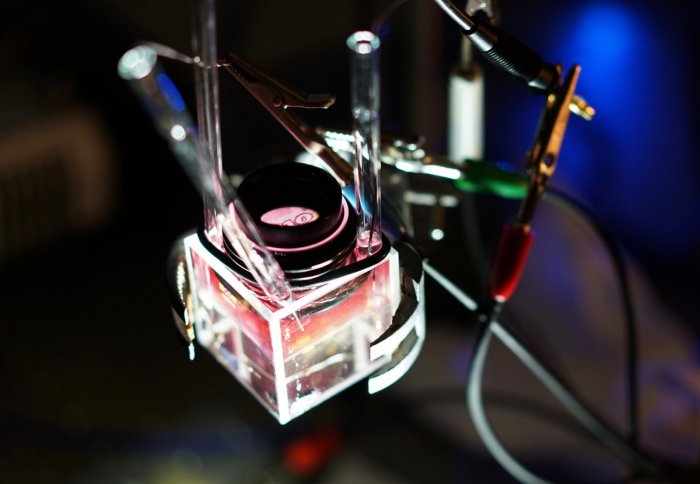Scientists Used Nanoparticles to Turn a Window Into a Mirror and Back Again
Credit to Author: Daniel Oberhaus| Date: Mon, 11 Sep 2017 15:05:01 +0000
Researchers at Imperial College London have managed to create a device from self-assembling nanoparticles that can change from clear to reflective as needed, and may open the door—or rather, window—to tunable materials that can alter their optical properties in real time.
As detailed in a paper published today in Nature , creating a tunable material like the researchers’ mirror-window hybrid has long been a challenge in materials science since the requisite changes require precision control of the particles involved at the nano-scale.
In particular, the researchers needed to create a layer of perfectly-spaced gold nanoparticles that is several thousand times less thick than the width of a human hair. To create this ultra-thin layer of gold nanoparticles, researchers had the gold particles self-assemble between two liquids that don’t mix.

When a small voltage was applied to this concoction, the researchers were able to change the spacing between the particles. When the particles were closer together, the layer acted as a mirror since it reflects light at all wavelengths. When the gold nanoparticles were less densely packed, it functions as a window by allowing all wavelengths to pass through the nanoparticle layer.
“It’s a really fine balance – for a long time we could only get the nanoparticles to clump together when they assembled, rather than being accurately spaced out,” said Joshua Edel, a professor of chemistry at Imperial College London.
Although the researchers weren’t the first to manipulate the density of nano-particle arrays, they were the first to devise a system that is reversible. This is because other systems relied on chemical properties of the material to instigate the change, whereas this system relies on the application of electricity.
As seen in the video above, the team was able reflect a 1 pound coin above the contraption when voltage is applied to the system. Without voltage, it is possible to see through the array to a 10 pound note below. Although these results are still experimental, the tunable array could find application in the future as an optical filter for devices like telescopes that need to focus only on specific wavelengths of light, or a chemical sensor.